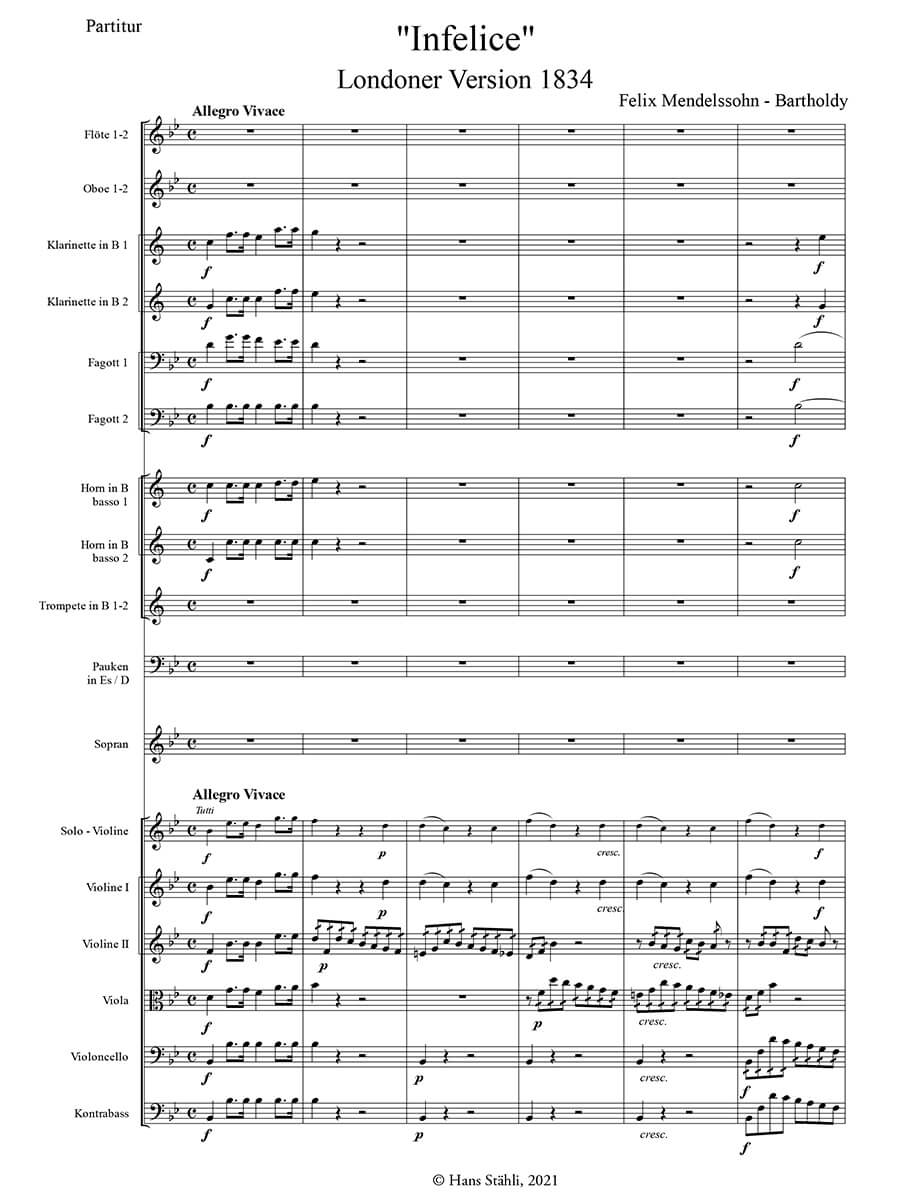Infelice, Mendelssohn’s concert aria in the original London version 1834 (first print)
Mendelssohn-Bartholdy, Felix
24,00 €
Preface
Felix Mendelssohn Bartholdy – Infelice
(February 3, 1809, Hamburg – November 4, 1847, Leipzig)
Mendelssohn’s concert aria in the original London version 1834
Preface
In 1832, for a handsome fee, the Philharmonic Society of Music in London ordered from Mendelssohn the premiere performances of a symphony, an overture, and “a vocal piece.” The three works were performed at different times in 1833 and 1834. The symphony was, after all, the “Italian Symphony” in A major. After its very successful premiere, Mendelssohn never conducted it himself again. The work was published as Op. 90 only after his death. The “Trumpet Overture” in C major Op. posth 101 was already written in 1826, shortly before the “Midsummer Night’s Dream Overture”. It had already been performed in Berlin and Düsseldorf, and was now revised again for London. As a vocal piece, Mendelssohn wrote on the spot a concert aria for soprano – “Infelice.” He had just met the prominent soprano Maria Malibran in London, knew of her extramarital affair with the no less prominent violinist Charles-Auguste de Bériot, enriched the aria with a solo violin, and now speculated on an absolute star cast for the premiere.
The concert aria “Infelice”, based on a text – or rather on several texts – by Pietro Metastasio, still enormously important in the 19th century, is constructed according to the usual scheme: Recitative, Cavatine and Cabaletta, with a short Cavatina reminiscence before the end of the work. The home key is B-flat major. The plot conforms to the norm: a woman abandoned by her lover mourns, wrangles, but also looks back fondly on pleasant hours. The solo violin first appears in the Cavatine, dialoguing with the voice, then singing together in thirds, and finally cadenzing alone. In the Cabaletta it is used scarcely but effectively. The tuning of the timpani is remarkable: not tonic / dominant as usual, but tuned in the minor second d – e flat. This works well both with the tonic and subdominant of B-flat major, as well as the frequently appearing minor parallel G minor. In the “Capriccio brillant” for piano and orchestra, written a year earlier, the timpanies are similarly tuned in an unusual way. In the “Trumpet Overture” mentioned above, Mendelssohn even uses 3 timpani, which occasionally even make their thematic mark.
The premiere of the aria took place on May 19, 1834, but without the desired soloists. Maria Caradori-Allan was the soprano, the concertmaster of the orchestra took over the violin part, Thomas Cooke conducted. Two years later there was another performance with the same soloists. The conductor was none other than Ignaz Moscheles, former teacher, friend and piano partner of Mendelssohn. Moscheles had a permanent residence in England for a long time.
Hans Stähli, 2021
Performance material is available from Musikproduktion Höflich (www.musikmph.de), Munich.
Score Data
| Edition | Repertoire Explorer |
|---|---|
| Genre | Choir/Voice & Orchestra |
| Size | 210 x 297 mm |
| Performance Materials | available |
| Printing | First print |
| Pages | 54 |
